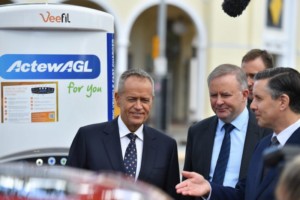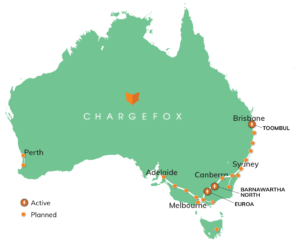Where to now for EVs in Australia
Successive governments have been totally unaware or turned a blind eye to the biggest disruption of the automotive industry since the advent of ‘horseless carriages’ in the eighteen hundreds.
 Back then the rolling out of automotive transport came at a point in time when horse manure was clogging city streets and reaching crisis point for city planners and health authorities. The advent of the internal combustion engine eliminated the ‘horse manure crisis’ of the eighteen hundreds but replaced it with something more sinister.
Back then the rolling out of automotive transport came at a point in time when horse manure was clogging city streets and reaching crisis point for city planners and health authorities. The advent of the internal combustion engine eliminated the ‘horse manure crisis’ of the eighteen hundreds but replaced it with something more sinister.
The legacy of the internal combustion engine includes polluted cities, premature deaths, externalised health costs, oil wars and carbon emissions. In Australia it has also left the country fatally compromised from a security perspective with just weeks of reserves before the nation comes to a complete stop – no food in the shops, no medical supplies to hospitals and an inability to defend ourselves. Our politicians have been aware of this situation since Air Vice Marshall John Blackburn’s report was tabled in February 2013.
It can rightly be described as a dereliction of duty for the government’s number one priority which is the security of its citizens. With the re-election of a LNP government we will not see any positive direction on EVs in the near term. The move from an oil based transport fleet to an electrically Australian powered one looks from a policy position to be stuck in neutral.
 Despite the inaction by politicians Australian entrepreneurs have led the way with impressive technology in the advancement of the global EV disruption. Brisbane based Tritium now supplies charging infrastructure around the world. magniX has made inroads in aircraft propulsion systems. ACE electrics have begun the production of Australian light EVs and SEA Electrics has been producing heavy duty trucks and commercial vehicles for some years now.
Despite the inaction by politicians Australian entrepreneurs have led the way with impressive technology in the advancement of the global EV disruption. Brisbane based Tritium now supplies charging infrastructure around the world. magniX has made inroads in aircraft propulsion systems. ACE electrics have begun the production of Australian light EVs and SEA Electrics has been producing heavy duty trucks and commercial vehicles for some years now.
Recharging infrastructure is such that circumnavigation of Australia is not only possible but been achieved a number of times. Fast charge stations are in place all the way from Adelaide to Cairns and the latest ultra fast chargers are now a reality thanks to Chargefox which is rolling out a network of them along the eastern seaboard with plans for several in WA.
The other boon for Australia in this global transport disruption is the incredible variety of materials we have available for battery production. We are currently the world’s largest exporter of lithium and have reserves of cobalt, nickle, manganese, graphite – in fact all the materials for modern electric batteries. Value add is something we need to take advantage of and that is beginning to happen with the likes of two lithium hydroxide plants being constructed at Kwinana in WA.
The number of EV models available in Australia is still somewhat limited but has increased over the past two years with more choice on the way.
 We can only hope the re-elected government will ditch the ludicrous rhetoric it embarked on during the election campaign and deal with the global disruption in a pragmatic and sensible manner while getting Australia ready for the inevitability of clean vehicles. With an increase in diesel consumption and transport emissions over the past year we really need to stop the subsidies going to fossil fuels.
We can only hope the re-elected government will ditch the ludicrous rhetoric it embarked on during the election campaign and deal with the global disruption in a pragmatic and sensible manner while getting Australia ready for the inevitability of clean vehicles. With an increase in diesel consumption and transport emissions over the past year we really need to stop the subsidies going to fossil fuels.
Over $4 billion annually is the externalised subsidy to the oil industry foisted on the taxpayer for health services and premature deaths directly attributable to vehicle exhaust. Nor can we justify sending $30 billion overseas each year to buy oil and keep ourselves dependent on an energy source that has dragged us in to wars, is unreliable and leaves us vulnerable from a security perspective. That money should be spent on local energy resources, providing local jobs and creating the infrastructure necessary for a smooth transition to clean transport. Future Australians will look back on this time with incredulity at how tardy our politicians have been in advancing a clean electric fleet that secures Australia’s energy independence and benefits all of Australia.

Hi,which type of car did you convert please ? How much did it cost you ? And were did you have it done? Thx
hi – the car was a Mitsubishi Mirage. It was not cheap! – batteries were a lot more expensive then so including the purchase of the ICE Mirage it was about $25K – perhaps a little more. It was done at http://evshop.com.au in Balcatta in WA.
Very interesting post. Australia is not only dealing with pollution, but also with a more materialistic issue: the fuel cost. The solution is sustainable mobility lead by electric vehicles. It seems that charging station are becoming a solid reality in Australia, so its up to politics (incetives, more infrastrucutres etc) and people to buy greener means of transport.
I really think that electric cars are the future. I really appreciate building such a lovely platform for electric car lovers. Thanks
thanks James 🙂